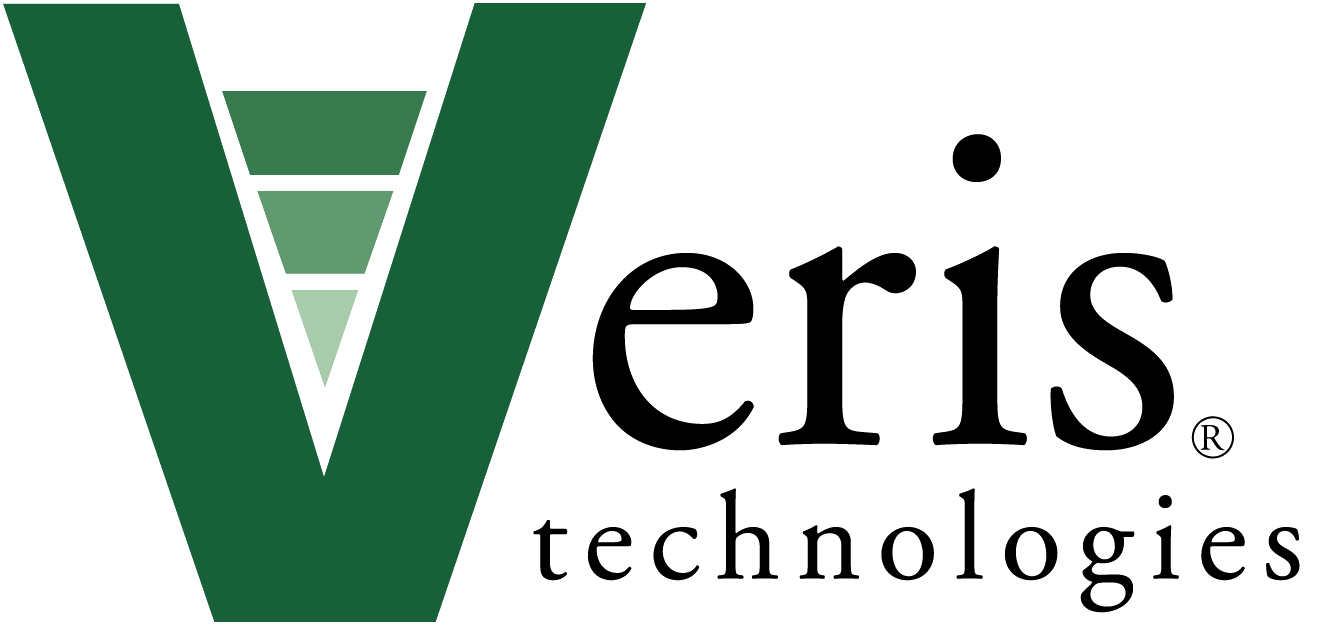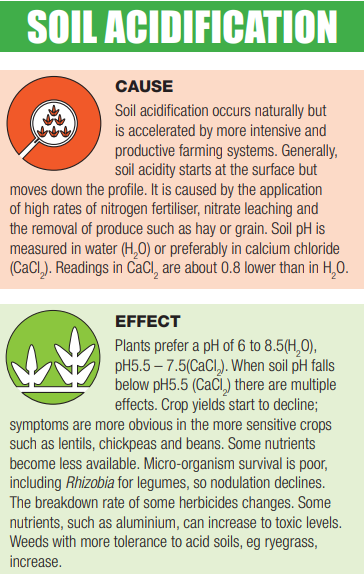Action on Soil Acidity in Australia.
We're excited to see how farmers are addressing yield robbing soil acidity in South Australia. Here is the story of how a coordinated effort is improving yields and providing savings on lime costs:
In recent years, farmers on the Yorke Peninsula, South Australia have noticed poor performing patches in lentil and faba bean crops. Often these patches are on red loamy soils. The soils in this region are generally neutral to alkaline. Could increasing soil acidity be impacting the performance of crops with poor tolerance to acid soils?
To address this issue the Agricultural Bureau of SA Inc launched a project. ‘Innovative and cost-effective methods to manage ‘emerging’ soil acidity to improve soil health, crop and pasture production’. The project was carried out with three Agricultural Bureaus branches, South Kilkerran, Arthurton and Petersville, in 2018 and 2019. As part of the project 12 paddocks with mostly red loamy soils were pH mapped with PIRSA’s Veris® machine (https://www.veristech.com/sensing). Ten of these paddocks had some acidic areas.
Farmers response to soil acidification
Matthew Schulz - Sandilands, Yorke Peninsula: Matt and his father Peter farm several blocks of land near Sandilands. On the home block called Zacker’s, soil types range from red loam to sandy loam containing ironstone gravel over red clay. There are also limestone reefs in places. Other blocks have grey calcareous loams with patches of sandy loam. The Schulzs considered most of their soils to be alkaline.
“The better soils at Zacker’s are continuously cropped most recently with a rotation of wheat, lentils, wheat, lentils, wheat, chickpeas, wheat, as the lentil prices have been good,” said Matt.
Matt was concerned about some patches of poor performing soil that have been there as long as he can remember. These patches grew plenty of ryegrass but not much crop or pasture. He was considering ripping these patches. Fortunately, before he started a program of ripping, the opportunity to be involved in the soil pH mapping project arose. “The project described the symptoms of soil acidity in lentils as patches of poor growth; stunted and yellowing and not nodulating well. This is exactly what we had observed”.
The observations were confirmed with the lentil biomass map from August 2016 and lentil yield map from the same year (Figures 1 and 2).
At the 36.6 hectare Zacker block, Matt carried out some tests using a field pH test kit. He found the topsoil was about pH5.0(water) which is equivalent to pH4.2(calcium chloride CaCl2 ) (see page 4). In the poor performing parts and up to pH8.0(water), equivalent to pH7.2(CaCl2 ), in the better parts of the paddock.
In April 2019, the paddock was mapped by PIRSA using an on-the-go Veris® soil pH machine. The pH map (Figure 3) showed a strong relationship to the biomass and yield maps. On converting the readings from the machine to pH (CaCl2 ) it was found that pH ranged from pH3.8 to 8.0(CaCl2 ). About 18ha had a pH below the optimum level of pH5.5(CaCl2 ).
“I wasn’t surprised; I had noticed these poor areas in crops of lentils, chickpeas and barley in previous years; all of these crops are susceptible to acid soils.”
PIRSA created a lime prescription map (Figure 4) by using the pH map, soil texture and lime quality (based on 100% neutralising value) to set lime rates. The aim was to raise the soil to pH5.5(CaCl2 ). While most of the paddock required no lime, some areas required up to five tonnes of lime per hectare. This would be best applied as 3t/ha now and a further 2t/ha in five years time, plus some extra for maintenance. The Schulzs have a belt driven Marshall spreader that they can manually change the rates based on the map. Matt had chosen to purchase good quality lime (Table 1). but stocks ran out in 2019. He now plans to lime the paddock in 2020.
The savings from using variable rate lime are part of the equation, the other opportunity is increased production. It has been estimated that in this paddock alone soil acidity had cost Matt about $11,000 of lentil production based on $500/t
“It was a relief to find that these low production areas, are caused by something we can correct relatively simply and cost effectively, by adding lime.”
Peter and Evan Kakoschke - Sandilands, Yorke Peninsula: Soil acidity is not a new issue to brothers Peter and Evan Kakoschke or their father Rex. While much of their topsoil is alkaline, they have recognised patches of slightly acid topsoil scattered across their property. Their soils range from clay loam to a sandy clay loam, generally with a clay subsoil. However, in some places there are limestone reefs. The more acid spots are often defined by their reddish colour and gritty texture.
“Most of our pasture paddocks are sown to medic but sub-clover is sown in the more acid patches, which can be up to a couple of hectares. We sometimes sow a medic sub-clover mixture to see which survives” explained Peter.
While the sub-clover resulted in improved production and cover on the more acid soils, the growing of legume crops and pastures was causing soil pH to decline. Two other significant factors contributed to soil acidification. The use of nitrogen (N) fertiliser, particularly sulphate of ammonia (SOA) and the substantial increase in grain and hay removal since 2010.
In 2016, lime was spread and incorporated by ripping, which mixed the surface layers. The paddock was rolled before seeding. The following year a whole farm program of liming was started. This was based on lentil yield maps and paddock knowledge. Lime rates were manually changed from 0.5t/ha up to 2t/ha.
“In addition to the lentil yield map we looked at soil colour and ryegrass areas, as these are other indicators that can help when manually changing lime rates”.
Biomass maps (NDVI maps) gathered by satellite in the middle of the winter growing season, have also been used when creating lime rate zones (Figure 5). From their liming program they have recorded production increases.
As part of this project, Peter and Evan had a 32ha paddock pH mapped by PIRSA using the Veris® on-the-go machine. Soil pH ranged from pH4.5 to 7.8(CaCl2 ), with six hectares having a pH below pH5.5(CaCl2 ) (Figure 6). There is a strong correlation between the soil pH map and the medic biomass map (August 2018). From the pH map a lime prescription map was prepared (Figure 7). This showed that lime was needed only on 10ha of the paddock with a top rate of 3t/ha.
SOA had been used since 1991, because it offered several benefits. At the time it was a cheaper form of N and gave a bonus of sulphur. As it is a less volatile N source it could be applied prior to sowing, which reduced their seeding workload. Unfortunately, SOA is three times more acidifying than urea and one and half times as acidifying as diammonium phosphate (DAP).
Between 1999 and 2009 the Kakoschkes’ rolling average yield was 3.5t/ha for wheat and 3.2t/ha for barley. In 2010, they changed to a knife point seeding system with press wheels and since then average yields of these crops have increased by about one tonne per hectare.
“We had not considered that removing grain and hay was also making our soils acidic. “And, we thought the paddock limestone was keeping the soil alkaline but we did not realize this rock can be inert,” said Evan.
The Kakoschkes did not consider adding lime to their acidic soils until visiting a farmer in the mid-north of SA who had achieve good responses from liming. They started by soil testing a poorly performing leased block and found the surface pH was neutral but changed down the soil profile. Between 5 and 20cm soil was acid at pH4.5 to 5(CaCl2 ) and below this it rose rapidly to pH8.5(CaCl2 ).
The Kakosckes have now mapped three other paddocks and are applying lime only where it is required to increase soil pH to an optimum level of pH5.5(CaCl2 ). Soil pH mapping has enabled Peter and Evan to have a much clearer idea of the location and area of acid soils. A Bredall spreader that allows rates to be varied electronically, on-the-go, has been purchased. Liming is now considered to be an important part of their farming practice. This spreader works well with the very fine lime they have sourced. Peter and Evan now plan to regularly monitor and manage soil pH to maintain the production of their soils.
https://www.agbureau.com.au/ - South Australia Agricultural Bureau
https://www.facebook.com/agbureausa/ - South Australia Agricultural Bureau Facebook
https://www.dcceew.gov.au/environment/land/landcare - Australian Governments National Landcare Program
https://www.linkedin.com/in/emcleonard/?originalSubdomain=au - AgriKnowHow Founder, Emma Leonard, LinkedIn
https://www.pir.sa.gov.au/ - Project Manager, Andrew Harding










